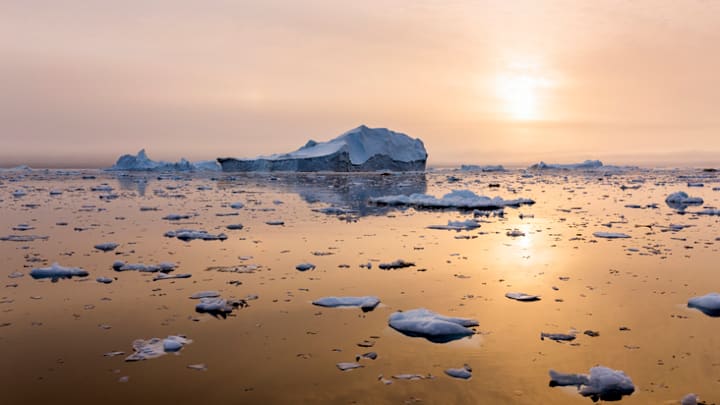We think there are 24 hours in a day. In reality, however, the amount of time it takes for the planet to make a full rotation on its axis—roughly 86,400 seconds—varies slightly depending on factors like the processes in Earth’s core, tectonic plate movements, and the gravitational forces of the moon.
Generally, rotation speed has slowed over time. Around 1 billion years ago, Earth made one full rotation in 19 hours. During the Jurassic period of the dinosaurs, which lasted from roughly 199 to 145 million years ago, days lasted almost at long as they do today, clocking in at about 23 hours.
Now, two new studies suggest that days will grow longer still—and not just because of natural processes, but also from human-made ones. Using neural networks to measure complex geophysical data from around the globe, an article published in Nature Geoscience demonstrates that, in addition to plate tectonics and lunar gravitational pull, redistribution of the Earth’s mass through melting polar ice explains nearly 90 percent of rotational variation now, and will likely intensify in the coming centuries.
As the Antarctic and Greenland ice sheets melt due to higher global temperatures and other factors, countless tons of water enter the oceans and gravitate toward the equator. The additional mass around the planet’s middle bulges outward and slows the speed of Earth’s spin, which lengthens the amount of time it takes to make a full rotation—in other words, a day.
A second study, published by the Proceedings of the National Academy of Sciences, projects that global warming-induced polar ice melting will lengthen days by around 2.62 milliseconds per century, thereby “overtaking lunar tidal friction as the single most important contributor to the long-term LOD [length of day] variations.”
While this change will be imperceptible to average humans, we may start to notice its consequences. For one, we will likely have to introduce negative “leap seconds” in order to keep our calendars and time zones from running out of sync, similar to how we use leap years. According to researchers, the introduction of leap seconds could start as early as 2029.
The projected slowing of Earth’s rotational speed is also expected to affect space travel. As Benedikt Soja, a professor at the Institute of Geodesy and Photogrammetry in Zurich, Switzerland, and co-author of the Nature Geoscience article, said in a statement, “Even if the Earth's rotation is changing only slowly, this effect has to be taken into account when navigating in space—for example, when sending a space probe to land on another planet.”
In addition to making days longer, the redistribution of Earth’s mass as a result of melting ice may also lead to changes in Earth’s axis, or tilt in relation to the sun, causing our planet to wobble. But what this wobbling will do to the planet’s processes, and how strongly they will be affected by slowing rotation speed, remains to be seen.
Discover More Stories About Earth’s Climate:
